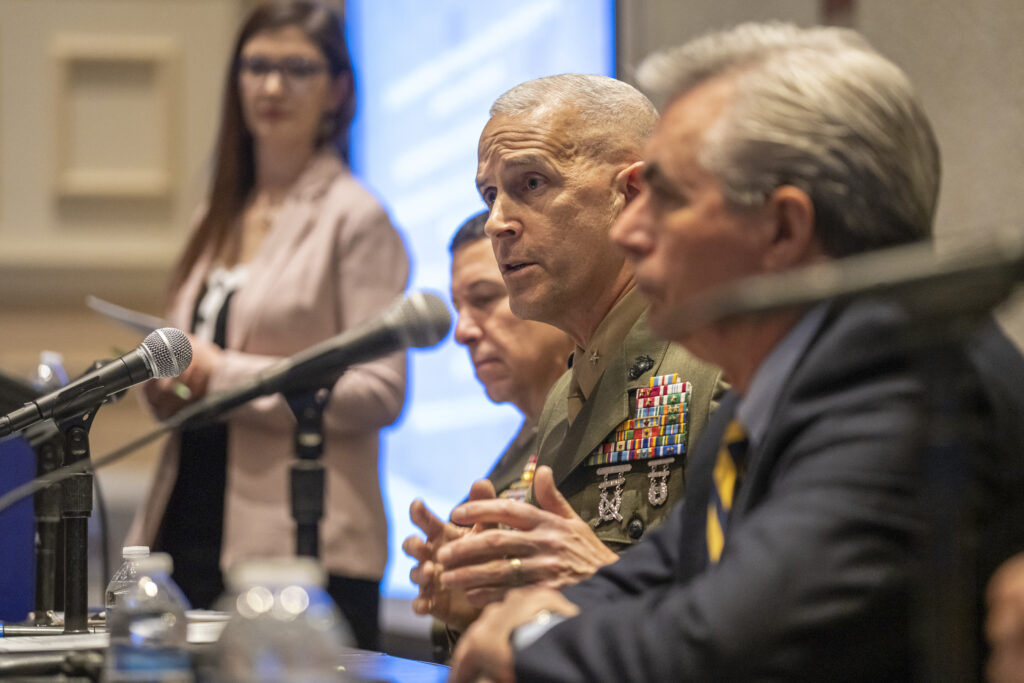
NATIONAL HARBOR, Md. — The Marine Corps’ concept of deploying small, lightly armed but highly mobile units into isolated locations within an adversary’s weapons engagement zone — called Expeditionary Advanced Base Operations — has the potential of quickly getting forces into a strategically vital area in response to an evolving threat when no other U.S. military assets are available, a senior Marine officer said April 5.
In addition to being a response to a threat, the concept also could serve as a deterrent by making an adversary stop to think before taking offensive actions, Maj. Gen. Benjamin Watson, Commanding General, Marine Corps Warfighting Laboratory, told an audience at Sea-Air-Space 2022.
Although the EABO proposal has been controversial, partly because Marine Corps Commandant Gen. David Berger is executing a dramatic restructuring of Marine forces to facilitate it, sharply cutting heavy weapons like tanks and towed artillery, and reducing total end strength.
But Watson emphasized EABO is “a naval concept,” which was approved by both Berger and Chief of Naval Operations Adm. Michael Gilday, and would directly involve Navy assets, including aircraft carrier battle groups.
And EABO “is a concept. It’s not proven yet,” and will be tested repeatedly and in increasing detail in the future, Watson said, which was reinforced by other officials on the panel.
Brig. Gen. David Odom, director Expeditionary Warfare on the Navy staff, echoed both the naval aspects of EABO and the intensity of the experimentation process that lies ahead. Odom cited a number of recent exercises, including Nobile Focus, which involved two Marine expeditionary units, Navy surface action ships and Japanese Self Defense Forces. That exercise and further trials tested one of the critical challenges of the EABO concept — how to support and sustain these isolated units.
The sustainment and support question must be addressed by substantial “engineering” work, including procuring new amphibious ships and unmanned systems, Odom said.
The Marines are strongly urging production of a light amphibious warfare ship, which would be much smaller and more nimble than existing amphibs. The new Navy budget proposed delaying starting the LAW program.
Tim Kao, vice president of data science at the Center for Naval Analysis, noted the challenge of sustainment is created by the development of precision anti-ship missiles and other systems by potential adversaries such as China, which prohibit past supply procedures like those used in Operation Desert Storm.
And Kao said in considering EABO, “You really have to think through how we contribute to deterrence.”
Retired Rear Adm. Jamie Barnett, vice president of Global Communications Solutions at Viasat, said his firm’s extensive and growing fleet of communications satellites could help the EABO units by providing the secure connections to keep them from being isolated.




